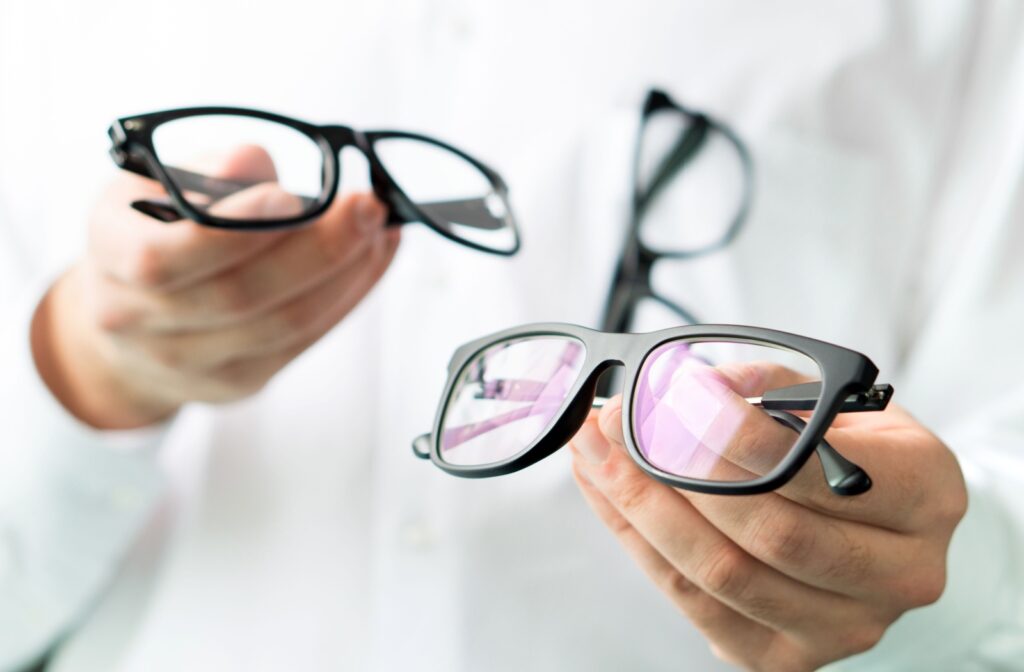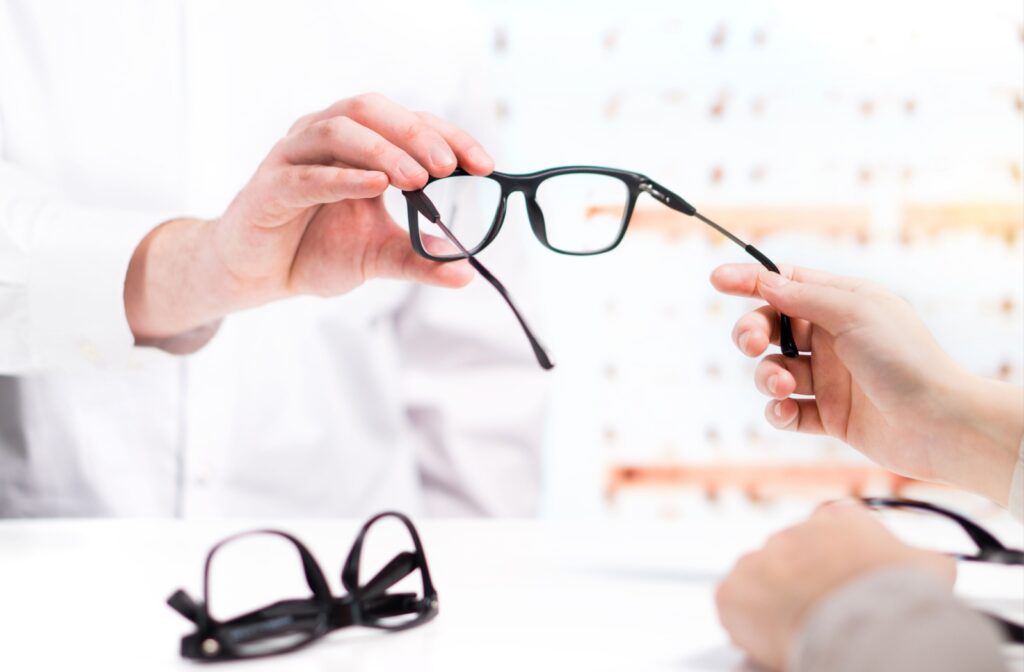If you’ve dealt with constant blurry vision, you’re likely using a pair of eyeglasses or contact lenses to restore your eyesight. However, being familiar with your eyewear and how it works is important, as this lets you know what you should expect from, and what should be considered unusual for, your vision. So what exactly are single-vision lenses, and what are they for?
Single-vision lenses refer to any eyewear that corrects vision at a specific distance, rather than at multiple distances at once. This is ideal for conditions like nearsightedness and astigmatism, but not for conditions like presbyopia or age-related damage to the eye.
What Are Single-Vision Lenses For?
Your eyesight is much more complicated than you may think. Light needs to enter your eye through your cornea, refract through the clear lens at the front, and then be focused on the retina—the light-sensitive layer of tissue at the back of the eye.
For you to see clearly, light needs to focus on the retina at a singular point. However, this doesn’t always work as it should; if the eye or cornea is misshapen due to refractive error, light refracts incorrectly inside your eye, leading to blurry vision, strain, and more.
This is what single-vision lenses aim to correct. These lenses refract light before it enters the eye, producing a clear image on your retina. By adjusting the path of light, these lenses can help correct vision issues that disrupt your everyday life.
What Can Single-Vision Lenses Correct?
Single-vision lenses are highly effective in correcting several common refractive errors, but not more advanced conditions like presbyopia. These lenses can help correct:
- Myopia
- Hyperopia
- Astigmatism
Myopia
Myopia, or nearsightedness, develops when the eye grows too long front-to-back. Instead of light focusing on the retina, light is focused in front of it, causing distant objects to appear blurry. Myopia usually develops in early childhood, and causes:
- Difficulty seeing distant objects clearly
- Frequent squinting to improve focus
- Eye strain or discomfort during prolonged visual tasks
- Headaches, especially after reading or looking at screens
Fortunately, this common problem can easily be corrected with single-vision lenses. These lenses bend light in a way that counteracts your eyes’ elongation, giving you clear vision at a distance.
Hyperopia
Hyperopia, more commonly known as farsightedness, develops when the eye grows shorter than it should. This condition can also develop when the cornea doesn’t curve correctly.
As a result, light entering the eye is focused behind the retina, making nearby objects appear blurry while distant objects may be seen more clearly. This condition can lead to:
- Difficulty focusing on close objects, such as reading or sewing
- Eye strain or discomfort during near tasks
- Headaches after prolonged visual work
- Blurred vision at close range
Hyperopia can also easily be treated with single-vision lenses that adjust light rays before they enter the eye. This makes it easier for you to focus on nearby objects while also preserving your clear distance vision.
Astigmatism
Astigmatism is a common refractive error that develops due to an irregular curvature of your cornea or lens. Astigmatism causes light to scatter as it enters the eye, focusing it on multiple points rather than on just the retina. Astigmatism leads to distortion and blurry vision at all distances, making it difficult to see clearly.
Individuals with astigmatism may experience:
- Blurred vision at both near and far distances
- Difficulty with night vision
- Eye strain or discomfort, particularly after long periods of reading or working on visual tasks
- Headaches due to constant efforts to focus
Single-vision lenses can effectively correct astigmatism by utilizing special lens shapes, which direct light onto a singular point on the retina. This doesn’t just give clear vision; it makes visual tasks significantly more comfortable and less distracting.

Alternatives to Single-Vision Lenses
While single-vision lenses are effective for most common refractive errors, they aren’t always suitable for more complex visual problems like presbyopia.
Presbyopia, the age-related loss of near vision, requires a different approach. This condition weakens the ability to control your eye’s lens, making it much more difficult to focus on nearby objects. Once presbyopia develops, single-vision lenses can no longer correct the problem alone; you would need a separate pair of lenses for your presbyopia. This means that, at any given movement, you’d have to choose between seeing at a distance or seeing up-close.
To prevent the need for multiple lenses, there are special lenses called “multifocals” that incorporate multiple prescriptions into one lens. Multifocals are divided into multiple viewing zones that blend seamlessly into one another in order to give you a simpler way to achieve clear vision at all distances. These alternatives provide a comprehensive solution for those living with more complex vision needs.
Are Single-Vision Lenses Right for You?
If you constantly live with blurry vision, it’s time to take action. Our team at Total Vision Camarillo can help. Whether you need single-vision lenses, multifocals, or another alternative, we’ll find the right solution for you to restore your clear vision. Book an appointment with our team today, and let’s work together to keep your vision clear.



